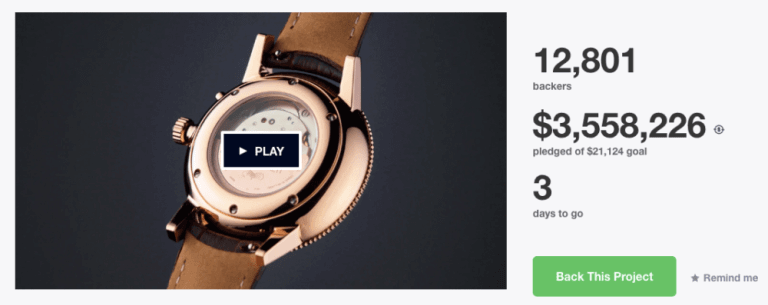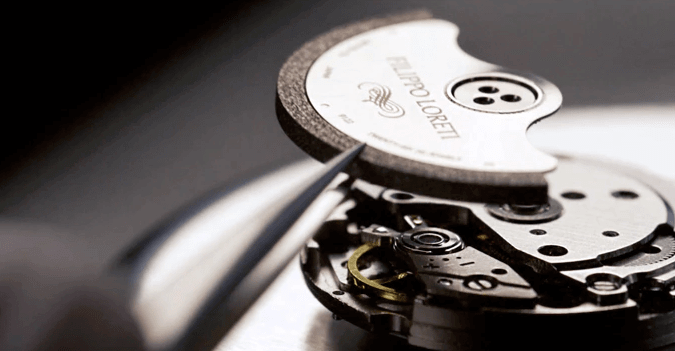How to sell $4.5M of watches on Kickstarter (Filippo Loreti)
Table of contents
After being disappointed in their personal search for affordable luxury watches, two brothers decided to start the Warby Parker of watches1. With backgrounds in fashion and operations management, they began exploring the world of Italian watch manufacturing, and launched their first line of watches on Kickstarter2. Achieving fairly strong success, this first Kickstarter closed at just under $1M from 6k backers3. After the standard delays and challenges usually faced by first time manufacturers, they appear to have shipped watches about 10 months later (7 months past the initial promise)4.
So far, a pretty standard Kickstarter story.
But here’s where things got interesting. With the initial wave of Kickstarter over, the brothers began to focus on their own website, but with mixed success. Struggling to make the new business model work, they wisely decided to go back to what they knew best - if the first Kickstarter could raise almost $1M, what could they achieve now with everything they’d learned from the first go round?
So just a year after their first Kickstarter, Filippo Loreti launched a second set of limited edition watches on Kickstarter5. With three days left as of this writing, they’re already at $3.5M from 12k backers - both increasing the number of backers and the average purchase size6.  So often we look for solutions within the box, that we miss the opportunity staring us in the face. No one runs two Kickstarter campaigns! But… if the first one worked… and limited edition runs are sort of perfect for crowd funding…
So often we look for solutions within the box, that we miss the opportunity staring us in the face. No one runs two Kickstarter campaigns! But… if the first one worked… and limited edition runs are sort of perfect for crowd funding…
Aside from the choice to do more of what they knew worked, what did Filippo Loreti do right in their crowd funding campaign?
#1. Fantastic visuals
From the classic campaign video (which is very similar in both campaigns) to concept videos for each watch line, this campaign puts its best foot forward. Visuals are critical to Kickstarter, and even more so when the product is high-quality fashion. Both the content and ambience of this page are designed to assure potential backers that this will be a beautiful product.
#2. Make it easy
Kickstarter pages are reminiscent of the long-form copy pages popular with information marketers a few years ago across the internet. There’s so much going on that you can keep scrolling forever. (This style of marketing is popular because it works.) But even in long-form sales pages, it’s enlightening to see what elements make it near the top of the page.
In this case, they’ve chosen to prioritize a very simple video that - through screen capture and voice over - shows exactly how to become a backer. This is a fantastic choice that likely made them hundreds of thousands extra - far too often, we assume that people are digitally savvy and leave them on their own. Much better to assume nothing and make sure we give people the directions needed to take the desired action.
#3. Use paid promotion
Just because you’re on Kickstarter doesn’t mean you can’t do some paid promotion. I personally noticed this campaign because of an ad that came across my Facebook feed. Kickstarter pages tend to be very high converting landing pages, so as long as your ROI works out, paid promotion can be a great way to get momentum early in a campaign and maximize funding toward the end. (Also, always think about opportunities to remarket folks who already showed interest.)
- Side note - how do watches still exist? Didn’t computers and phones solve that problem years ago?] [return]
- INTERVIEW WITH MATAS JAKUTIS, CO-FOUNDER OF FILIPPO LORETI] [return]
- Redefining Italian Luxury Watch - Filippo Loreti] [return]
- Filippo Loreti italian watches - does it seem legit?] [return]
- Redefining Italian Luxury Watch - Filippo Loreti] [return]
- A startup “made in Italy” beats the record crowdfunding on Kickstarter] [return]